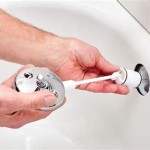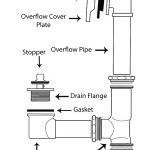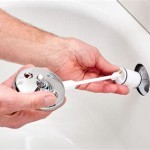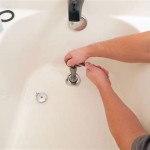Replacing Stand-Alone Bathtub Taps: A Step-by-Step Guide
Stand-alone bathtubs, often a focal point in bathroom design, require dedicated taps for filling and draining the tub. Over time, these taps can wear out, leak, or become aesthetically outdated. Replacing them is a common bathroom renovation project that homeowners can tackle themselves with the right tools and knowledge. This guide provides a step-by-step process for replacing stand-alone bathtub taps, outlining essential steps and considerations.
1. Planning and Preparation
Before embarking on the replacement process, thorough planning and preparation are crucial. The first step involves selecting the new taps. Consider the style, finish, and functionality that best complement the bathtub and bathroom decor. Measure the existing tap holes and spout reach to ensure compatibility with the chosen replacements. It's also advisable to check the water supply valves and drain system for any potential issues to avoid complications during the replacement process.
Gather the necessary tools, including:
- Adjustable wrench
- Channel-lock pliers
- Screwdriver set
- Plumber's tape
- Tub and tile sealant
- Safety glasses and gloves
- Optional: Pipe wrench
Turn off the water supply to the bathtub by locating the shut-off valves, usually found near the water heater or under the sink. To prevent water damage, place towels around the base of the bathtub to absorb any potential leaks.
2. Removing the Old Taps
With the water supply shut off, it's time to remove the old taps. This process typically involves the following steps:
- Disconnect the water supply lines: Carefully detach the hot and cold water supply lines from the old taps using adjustable wrenches. Make sure to hold the pipes firmly to prevent them from turning with the wrenches.
- Remove the faucet handles: Some handles may require a screwdriver, while others may have a small set screw that needs to be loosened. Once loosened, remove the handles gently.
- Unscrew the faucet body: Locate the retaining nut or screws securing the faucet body to the bathtub deck and remove them with the adjustable wrench or screwdriver. You may need to use a channel-lock pliers to grip the body firmly while removing it.
- Disconnect the drain assembly: If the taps are connected to a pop-up drain assembly, separate the drain assembly from the tap body. This usually involves loosening a retaining nut or screw.
- Remove the spout: Unscrew the spout from the faucet base using the adjustable wrench. If the spout is stuck, try using a pipe wrench for a more secure grip. Always protect the finish of the spout during this process.
3. Installing the New Taps
After removing the old taps, it's time to install the new ones. Follow these steps:
- Prepare the faucet body: Attach the new faucet body to the bathtub deck, ensuring the alignment is perfect. Use the provided screws or nuts to secure the body in place.
- Connect the drain assembly (if applicable): If the new tap comes with a drain assembly, connect it to the faucet body, tightening it securely.
- Attach the spout: Screw in the new spout, ensuring a tight fit without overtightening.
- Connect the water supply lines: Attach the new water supply lines to the tap body, using plumber's tape to prevent leaks at the connections.
- Install the faucet handles: Attach the new handles to the tap body, ensuring they are securely fastened.
- Test the water supply: Turn the water supply valves back on slowly, checking for any leaks at the connection points. If there are leaks, tighten the connections further until they stop.
Once the new taps are installed and tested, clean up the work area and dispose of the old taps properly. Consider filling the bathtub with water to test the drain functionality and ensure the taps operate smoothly.
Replacing stand-alone bathtub taps is a relatively straightforward process. By following these steps carefully and taking appropriate precautions, you can ensure a successful bathroom renovation. However, if you encounter any difficulties or feel uncertain about any part of the process, it's always best to consult a professional plumber for assistance.

Faucet Singapore Standalone Attractive Designs

Faucet Singapore Standalone Attractive Designs

Install A Floor Mount Bathtub Faucet Rona

Install A Floor Mount Bathtub Faucet Rona

Bathtub Faucet Deck Mount Single Handle

How To Connect Install Bath Tap Standpipes Or Tails

Plumbing How To Replace A Jacuzzi Bathtub Faucet Home Improvement Stack Exchange

Bwe Waterfall Single Handle Floor Mount Freestanding Tub Faucet Bathtub Filler With Hand Shower In Brushed Nickel A 97011 N The Home Depot

Installation Guidelines For Ove Freestanding Faucet Series Model Athena V02

Bathtub Faucet Replacement
Related Posts








